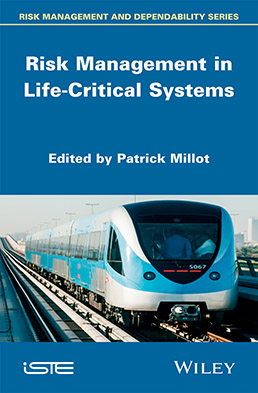
Risk management deals with prevention, decision-making, action taking, crisis management and recovery, taking into account the consequences of unexpected events. The authors of this book are interested in ecological processes, human behavior, as well as the control and management of life-critical systems, which are potentially highly automated. Three main attributes define life-critical systems, i.e. safety, efficiency and comfort. They typically lead to complex and time-critical issues and can belong to domains such as transportation (trains, cars, aircraft), energy (nuclear, chemical engineering), health, telecommunications, manufacturing and services.
The topics covered relate to risk management principles, methods and tools, and reliability assessment: human errors as well as system failures, socio-organizational issues of crisis occurrence and management, co-operative work including human–machine cooperation and CSCW (computer-supported cooperative work): task and function allocation, authority sharing, interactivity, situation awareness, networking and management evolution and lessons learned from Human-Centered Design.
Part 1. General Approaches for Crisis Management
1. Dealing with the Unexpected, Guy A. Boy.
2. Vulnerability and Resilience Assessment of Infrastructures and Networks: Concepts and Methodologies, Eric Châtelet.
3. The Golden Hour Challenge: Applying Systems Engineering to Life-Critical System of Systems, Jean-René Ruault.
4. Situated Risk Visualization in Crisis Management, Lucas Stéphane.
5. Safety Critical Elements of the Railway System: Most Advanced Technologies and Process to Demonstrate and Maintain Highest Safety Performance, Stéphane Romei.
6. Functional Modeling of Complex Systems, Morten Lind.
Part 2. Risk Management and Human Factors
7. Designing Driver Assistance Systems in a Risk-based Process, Pietro Carlo Cacciabue.
8. Dissonance Engineering for Risk Analysis: A Theoretical Framework, Frédéric Vanderhaegen.
9. The Fading Line Between Self and System, René Van Paassen.
10. Risk Management: A Model for Procedure Use Analysis, Kara schmitt.
11. Driver-Assistance Systems for Road Safety Improvement, Serge Boverie.
Part 3. Managing Risk Via Human-Machine Cooperation
12. Human–Machine Cooperation Principles to Support Life-Critical Systems Management, Marie-Pierre Pacaux-Lemoine.
13. Cooperative Organization for Enhancing Situation Awareness, Patrick Millot.
14. A Cooperative Assistant for Deep Space Exploration, Donald Platt.
15. Managing the Risks of Automobile Accidents Via Human–Machine Collaboration, Makoto Itoh.
16. Human–Machine Interaction in Automated Vehicles: The ABV Project, Chouki Sentouh and Jean Christophe Popieul.
17. Interactive Surfaces, Tangible Interaction: Perspectives For Risk Management, Christophe Kolski, Catherine Garbay, Yoann Lebrun, Fabien Badeig, Sophie Lepreux, René Mandiau and Emmanuel Adam.
Patrick Millot has been Full Professor at the University of Valenciennes in France since 1989. He conducts research on Automation Sciences, Artificial Intelligence and Human–Machine Systems (HMS). He is the author of approximately 200 publications and collective books. He has led several regional, national and international projects on supervisory control and transport safety.